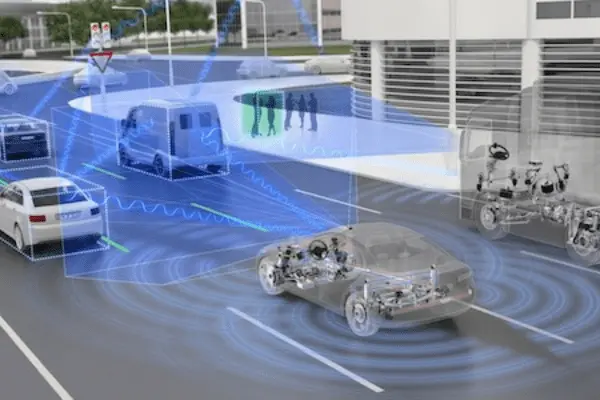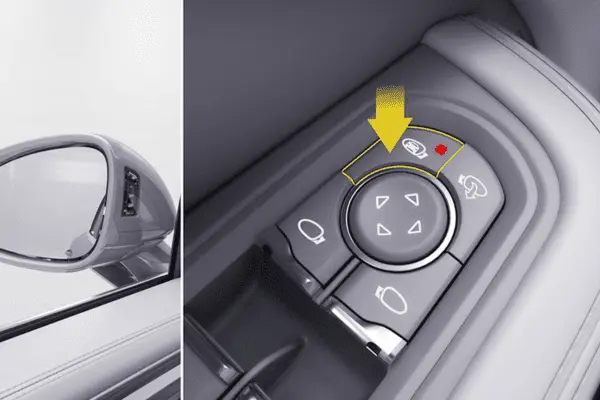Introduction to Driver-Assist Features
There has been a lot of discussion about completely autonomous vehicles, but it’s crucial to realize that this is a gradual process. A five-level framework has been established by the Society of Automotive Engineers (SAE) to define the automation level of every given vehicle. Driver-assist features that automate the choices a driver must make in specific situations need to be created and then incorporated into a unified software stack to achieve a fully autonomous, level-5 vehicle. Creating features that take care of specific duties and merging them can help development teams go from a Level-1 or Level-2 configuration to a Level-3 vehicle.
We’ll examine a few characteristics of level-1 or level-2 autonomous cars in this blog post. The Advanced Driver-Assist Features covered in this blog post are divided into two categories: passive safety measures, which just alert the driver of an impending obstruction or collision, and active safety features, which actively interact with the driver to reduce the likelihood of an accident.
1. Lane Keeping Assist:
Many traffic accidents are brought on by negligence. Driving the same route for hours on end might make the activity less thrilling, which makes the driver more likely to nod off and go to sleep. This could lead the car to stray into another lane, putting the occupants and drivers of nearby cars in danger. This type of incident is intended to be avoided with the Lane Keeping Assist feature. The system consists of a computer that determines if the car will leave the lane and visual sensors (cameras) that track lane lines.

Lane-keeping assist systems are frequently used in level-1 autonomous vehicles since they must detect when the vehicle is straying from its lane. Active LKA and passive LKA are the two main categories into which LKA systems are generally divided.
A passive LKA merely alerts the driver that the car is about to change lanes; it does not interfere with the vehicle’s functions. Conversely, an active LKA will also make an effort to correct the vehicle’s detour from the desired path. This adjustment could entail managing the steering or the speed of a specific wheel on the front axle (the car will drift slightly to the left, for example, if the left front wheel’s speed is decreased).
2. Lane-Change Assistance
when a driver turns on their turning indicators while changing lanes, a passive safety feature called lane change assist comes on. To help drivers identify any impediments that are hidden from view by rear-view mirrors, it is sometimes combined with a blind-spot detection system. When a vehicle approaches the host vehicle in the target lane, the LCA system typically detects it using cameras and radar sensors. The system determines whether it is safe to do the lane-changing maneuver based on its estimation of the speed of the vehicle approaching. The driver will receive a warning if the speed of the oncoming vehicle is too high.
In general, poor driving situations like bad weather, night driving, or heavy fog benefit from lane change assistance. These circumstances make it impossible for the driver to perceive their surroundings clearly, so utilizing a driver-assist system such as LCA might lessen the likelihood of an accident.

The Adaptive Cruise Control system
one function that is present in many contemporary cars is cruise control. When engaged, the system keeps the vehicle moving at a steady pace, even if the driver depresses the accelerator. The brake pedal (or clutch pedal in manual transmissions) can be simply engaged to deactivate cruise control if there is a slower car ahead of the host vehicle. Automakers have updated the cruise control feature in their vehicles due to the recent introduction of high-performance sensors.
It now detects the separation between the host car and the vehicle in front. Adaptive cruise control (ACC) has two ways to engage the throttle pedal: velocity tracking and distance tracking. This system incorporates logic to switch between these two modes based on a straightforward rule: the vehicle enters distance tracking mode if the distance between the vehicle ahead of it and the host vehicle is less than a certain threshold.

When in distance monitoring mode, the car adjusts its speed to stay a safe distance behind the front-running vehicle. The car activates the ACC system and maintains the driver-specified constant velocity when there are no obstacles within the pre-set range.
Therefore, while the ACC is activated, the driver does not need to take control of the car if there is no emergency because the system will sense the surroundings and slow down the vehicle as needed.
Developing ADAS Features at Dorleco
Consider registering for one of our training programs if you want to learn more about the technical components of these driver-assist features, such as modeling and reproducing them in virtual environments. To gain a thorough grasp of creating autonomous systems, sign up for one of our live online training sessions or take one of our online courses.
For more information on how our experience developing ADAS features can help you, send an email to info@dorleco.com.

